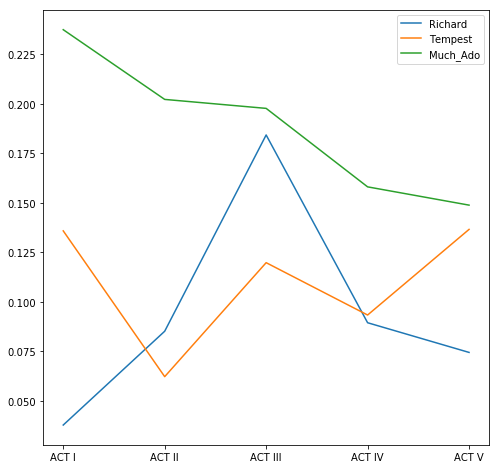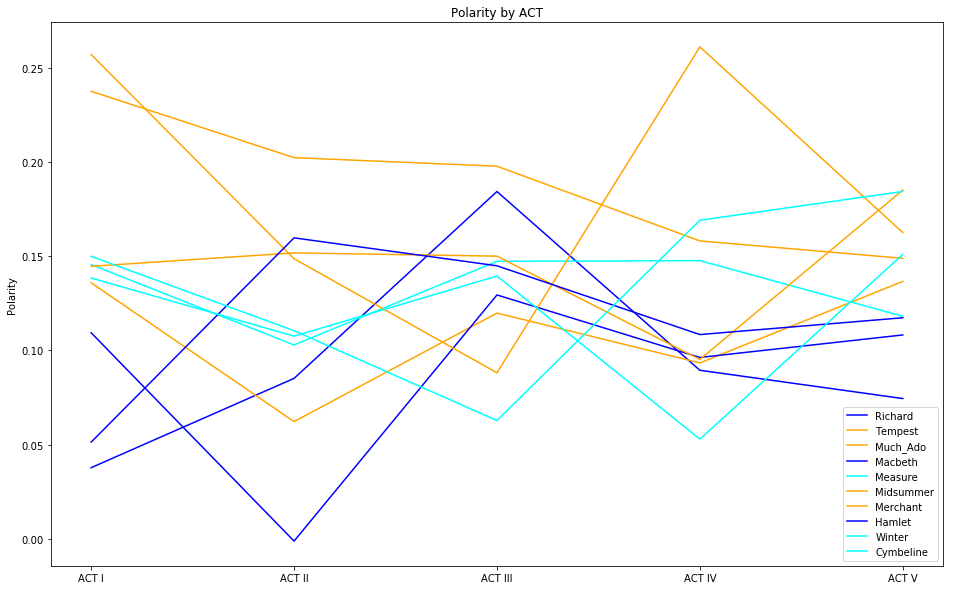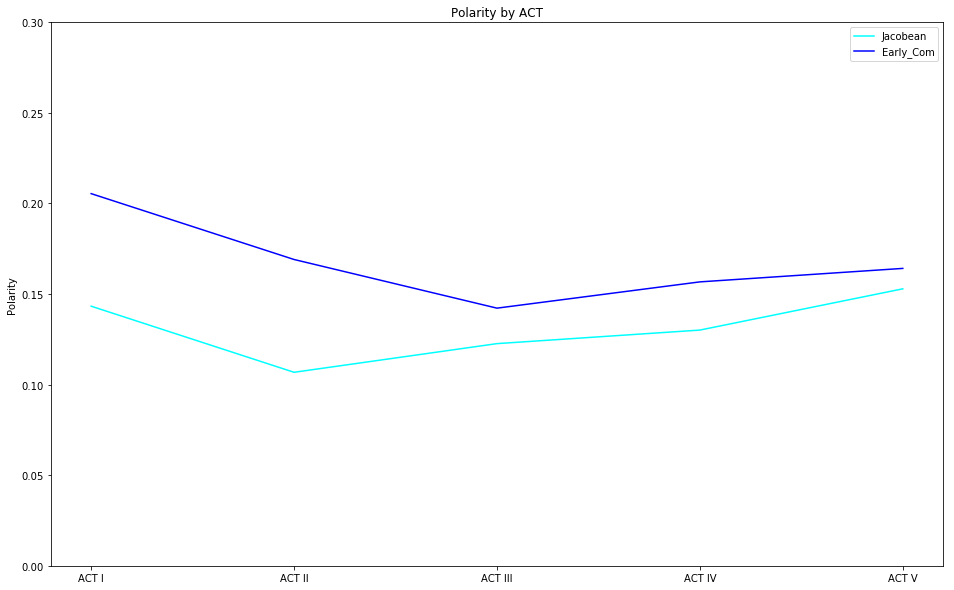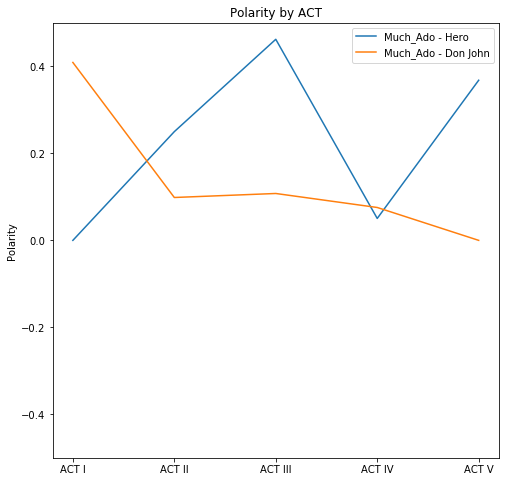Using NLP for Sentiment Analysis of Shakespearean Characters
This analysis is on using Natural Language Processing to identify character arcs in Shakespeare’s plays, as well as identify broad thematic sentiments/polarity of the plays themselves.
Typically we would see negative sentiments for tragedies, which have central figures who come to a self-realization and suffer downfall by the end of the play. The following visual graphs the trend in sentiment for Much Ado About Nothing, The Tempest and Richard III.

The downward spiral in Richard III is typical of tragedies. While we would see a joyful conclusion in comedies, Much Ado About Nothing is melancholic for much of Act V, so does not follow this trend perfectly.
We can also look at a series of plays together, to make a more robust comparison.

It is interesting to note that while comedies have more positive sentiment than Tragedies, the later Comedies (Jacobean Comedies) are less joyful than the early Comedies (Elizabethan Comedies). This visual summarizes the differences between the two types of Comedies.

We can also analyze specific character arcs: Here we have Don John (antagonist in Much Ado About Nothing), and Hero (unjustly accused and subsequently vindcated protagonist in the same play).
